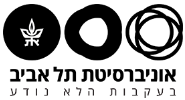סמינר מחלקתי של גאורגי רוזנמן- חשיפת הפנינה הנסתרת: השתקפויות קלאסיות של המציאות הקוונטית
Monday March 5th 2025 at 14:00
Wolfson Building of Mechanical Engineering, Room 206
abstarct:
Analogies between quantum and classical systems span numerous domains of physics, from optics and acoustics to condensed matter and fluid dynamics. Surface gravity water waves, in particular, exhibit striking similarities to both quantum mechanics and optics. By studying these analogies, we gain deeper insights into the fundamental behaviors that govern both quantum and classical systems. While quantum mechanics operates at microscopic scales, its principles, such as wave-particle duality, find intriguing classical counterparts, allowing photons and electrons to manifest both wave-like and particle-like properties in ways reminiscent of classical wave dynamics.
This research explores the propagation of surface gravity water waves within a framework inspired by the Schrödinger equation. We successfully observed quantum-like phenomena, including the Kennard cubic phase and Talbot carpets, and extended these studies to nonlinear regimes where fractional Talbot effects disappear due to interference suppression in a nonlinear medium. Additionally, our setup enabled novel observations of Bohmian trajectories, quantum potentials, and Wigner function distributions of wave fields. Furthermore, we investigated the dynamics of the inverted harmonic oscillator, a system central to black hole physics, and metastable states, revealing the dynamics of wave packets in phase space. Our experiments also uncovered logarithmic phase singularities in the water wave field. Lastly, we explored hydrodynamic analogies to the Fermi-Dirac statistics of black holes, where surface gravity wave turbulence exhibited statistical distributions akin to fermionic occupation, providing new perspectives on the thermodynamics and quantum statistical properties of event horizons.
Building upon this foundation, we incorporated the concepts of quantum coherence and decoherence into our study. By emulating decohering quantum evolution through surface gravity water waves, we experimentally replicated Lindblad master equation dynamics, observing the transition from coherent superpositions to classical mixtures. Using cat states as initial conditions, we demonstrated the progressive loss of coherence and reduction of purity over time, mirroring quantum decoherence in open systems. This work establishes a classical platform for investigating decoherence mechanisms that underlie quantum-to-classical transitions, with potential implications for testing theories for quantum technologies.
Beyond surface waves, hydrodynamic analogies extend to particle-wave duality in walking droplet systems, where a bouncing oil droplet interacts with its self-generated wave field. This system exhibits an analogy to the Aharonov-Bohm effect, in which a droplet’s trajectory is influenced by the phase of its surrounding wave field, despite no direct force acting on it—akin to the way an electron’s wavefunction acquires a phase shift in a region with a magnetic vector potential but zero classical field. Such hydrodynamic quantum analogs offer a new lens through which to examine nonlocality and gauge field effects in quantum mechanics.
Our findings open new directions in hydrodynamic analogies for studying quantum scattering, time-dependent potentials, and phase-space representations of black holes.
Short Bio:
Gary completed his B.Sc. in Physics and Astronomy in 2014, as well as his M.Sc. in Experimental Condensed Matter Physics in 2017, at Tel Aviv University. His master’s research was conducted under the supervision of Prof. Tal Schwartz, where he investigated ultrafast chemical physics phenomena and, for the first time, measured the spatial dynamics of exciton-polaritons in organic microcavities.
He earned his Ph.D. in 2023 from Tel Aviv University, where he studied quantum mechanical and optical analogies in surface gravity water waves. His research explored how hydrodynamic systems can emulate quantum effects, bridging classical wave dynamics with quantum optics and condensed matter physics.
Following his Ph.D., he was awarded a prestigious postdoctoral fellowship from the Israeli Ministry of Science, which supported his research at the Center for Quantum Science and Technology. There, he worked on high-dimensional quantum key distribution (QKD) and developed satellite tracking algorithms for secure quantum communication.
He was then invited to MIT as a postdoctoral associate, where he joined the group of Nobel Laureate Wolfgang Ketterle to study ultracold Dysprosium atoms, investigating their applications in quantum many-body physics and quantum simulation. Recently, he was awarded the C.L.E. Moore Instructorship Award and Fellowship at MIT, recognizing his contributions to finding bridges between hydrodynamics and quantum physics.


